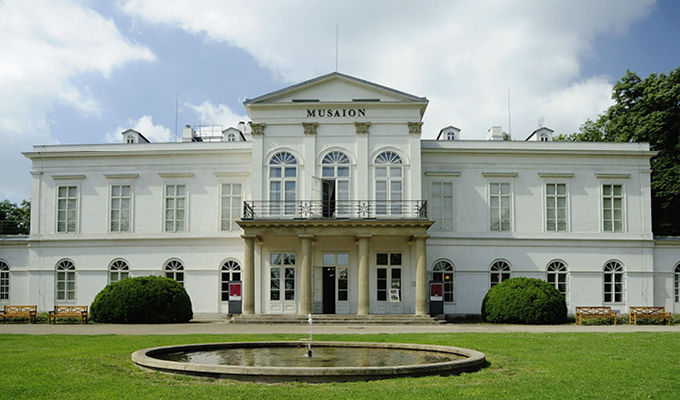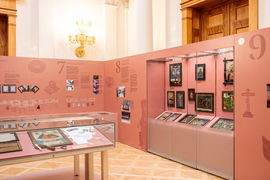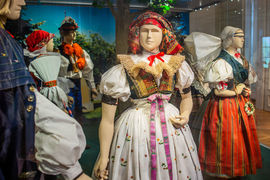History
The Ethnographic Museum was opened to the public in 1903. However, the history of the Kinsky Summer House dates back to 1826, when Prince Rudolf Kinsky bought several former vineyards on the hillside of Petřín with the intention of building an extensive park garden, including a summer residence. The representative one-storey building, in Empire style, a project of the Viennese architect Heinrich Koch, was used by the Kinsky family until 1901, when Prince Karel Kinsky sold it with the adjacent land to the city of Prague. The first exhibition was created from the collections of the previous Czechoslovak Ethnographic Exhibition, which took place in Prague in 1895. Together with several contemporary experts, Lubor Niederle became the museum’s leading figure. Among the architects, Josip Plečnik, Václav Roštlapil and Jiří Stibral were involved in its preparations.
In 1922, the museum became part of the National Museum. It continued its research into and presentation of the ethnographic heritage of the Czech lands and other European territories and states. The work of Drahomíra Stránská, among others, was of great significance. At her initiative, the Greek-Catholic Church of St. Michael was relocated to the Kinsky Garden from Medvedovec, Carpathian Ruthenia, in 1929. The second half of the 20th century brought a number of changes. In the 1960s the museum was modernized and it presented a new exhibition, the concept of which was created by Helena Johnová. At this time, a long new era started under the leadership of Alena Plessingerová. Later, however, due to many years‘ neglect of the building, the museum had to be moved out and its activities transferred to different premises. In the 1990s, after great efforts on the part of our staff and Czech society, major reconstruction of the Summer House was pushed through, and in 2005 a new and modern exhibition, Musaion, with a concept by Jiřina Langhammerová, was opened.
The Ethnographic department is one of the largest collection units of the Historical Museum. Currently, its fonds contains 200,000 collection items, illustrating the values of the folk culture of the Czech nation, as well as other Slavic and European nations and lands. Some of these items are on show in the permanent exhibition, which is complemented by temporary exhibitions. Several regular events of the Ethnographic Museum offer live presentations of folk culture. Since 2010, the Ethnographic Museum has been organizing the cycle Folklore regions of Bohemia, Moravia and Silesia. Within this cycle, regular evening events také place (usually the second Saturday of the month) in which an ethnographic region is presented in the form of a lecture and a performance by a folk ensemble from the given region. Occasionally, the evenings include the tasting of local specialities and other activities. There are also regular weekend courses on traditional handicrafts, and from October till May a course on Czech, Moravian and Slovak folk dances called Folk Dance Lessons.





